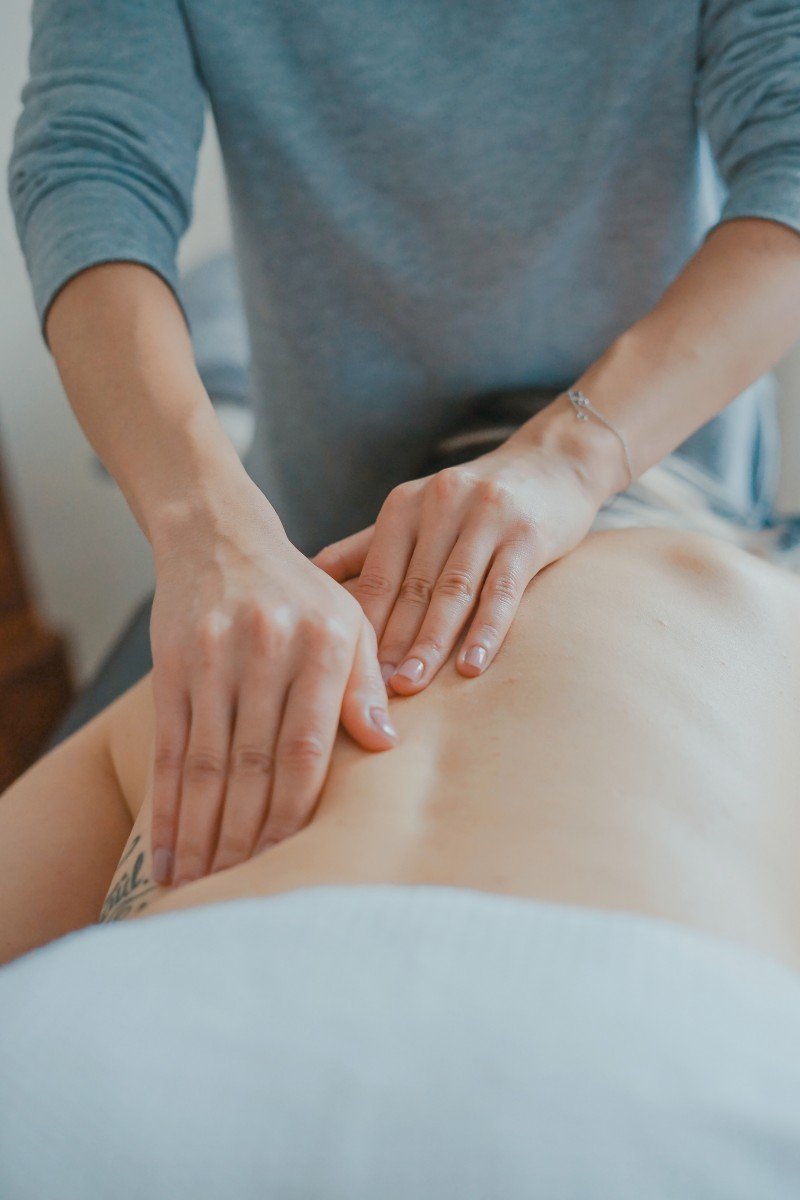
A startup in Vienna is working on a personalized technology for the treatment of chronic pain and inflammation. Electrical stimulation of the auricular vagus nerve offers a simple and sustainable alternative to straining medication and interventions.
There are one hundred and thirty million people with chronic back pain in Europe, the USA, and Japan. Conventionally, these are treated with potentially addictive opioids or invasive spinal cord stimulation. Jozsef Constantin Széles, specialist for general surgery and visceral surgery in Vienna, has developed an alternative: a minimally invasive technology. It is a kind of wearable that is fixed behind the ear and connected to tiny needles in the outer ear. The needles transmit electrical pulses and stimulate the open nerve endings of the auricular vagus nerve.
Many diseases are based on a (chronic) disturbance of activating and regenerating stimuli in the autonomous nervous system. If there is a mis-regulation, this manifests itself in various symptoms. This is where the electrical stimulation of the auricular vagus nerve comes in.
The therapeutic effect of electrical stimulation is based on the activation of inhibitory pain control systems and the release of neurotransmitters such as endorphins.
THE VAGUS NERVE
The vagus nerve is one of the twelve cranial nerves in the human body. Its task is to send information from the brain to the organs and to communicate the current state of the organs to the brain. This feedback is of great importance for the self-regulation of the body.
The supply network of the vagus nerve extends over the chest and abdominal cavity with oesophagus, lower respiratory tract, heart, aorta and the entire gastrointestinal tract. In addition, the vagus nerve sends sensory fibers to the external auditory canal and the auricle, which protrude into the core of the solitary tract in the brain stem.
The vagus nerve fibers in the auricle can be easily located. Nevertheless, the device must be applied by a doctor. The needles penetrate the skin, which is a minimally invasive procedure.
The purely sensory innervation of the auricle can reduce the direct influence on the organs affected by the pain – and avoids side effects.
PHYSIOLOGICAL FEEDBACK
Széles already applied for the patent in 1989. The first devices appeared in 2003 under the name P-STIM and were also distributed in America. In Austria, AuriSTIM is used at the pain outpatient clinic of the Vienna General Hospital. Since 2006, Széles has been working on the third generation of the technology in the SzeleSTIM spin-off. The team includes colleagues from the TU Vienna: Professor Eugenijus Kaniusas from the Institute for Biosensorics and Stefan Kampusch from the Institute for Electrodynamics, Microwave and Circuit Engineering. In long-term experiments, the researchers have observed how patients react to electrostimulation and thus collected data on pain perception and the various forms of treatment for chronic and acute pain.
The problem: The use of electrical stimulation without physiological feedback can lead to over- or under-stimulation. Over-stimulation can fatigue nerve endings. In case of under-stimulation, the therapy may not be successful. In order to be able to include body reactions such as pulse and respiratory rate, these must be measured. With the data the individually most effective stimulation patterns can be determined and the suitable stimulation sequences can be found.
The research goal is to achieve physiological feedback not through sensors worn on the body, but without additional sensors – directly on the ear. The data is supposed to be collected via a connected smartphone app with which the therapy can be individually adapted and controlled.
THERAPEUTIC EFFECTS
The lasting therapeutic effects of the device were already proven in clinical studies in 2004:
- In patients with chronic back pain and cervical syndrome, pain reduction, increased well-being, increased mobility and improved sleep quality were observed.
- Positive effects have also been proven in acute pain in patients with tonsillectomy and laparascopic nephrectomy.
- Furthermore, a relief of chronic pain in peripheral arterial occlusive disease could be achieved.
The prototype of the app works. In May 2018 SzeleSTIM won the Startup Challenge of the Pioneers Conference. If financing is successful, the market launch via hospitals is planned for 2020. It is currently still a disposable product – for hygienic reasons. It must be replaced at two-week intervals. In order to make the device accessible to as many people as possible, the researchers are striving for recognition by the health insurance companies.
